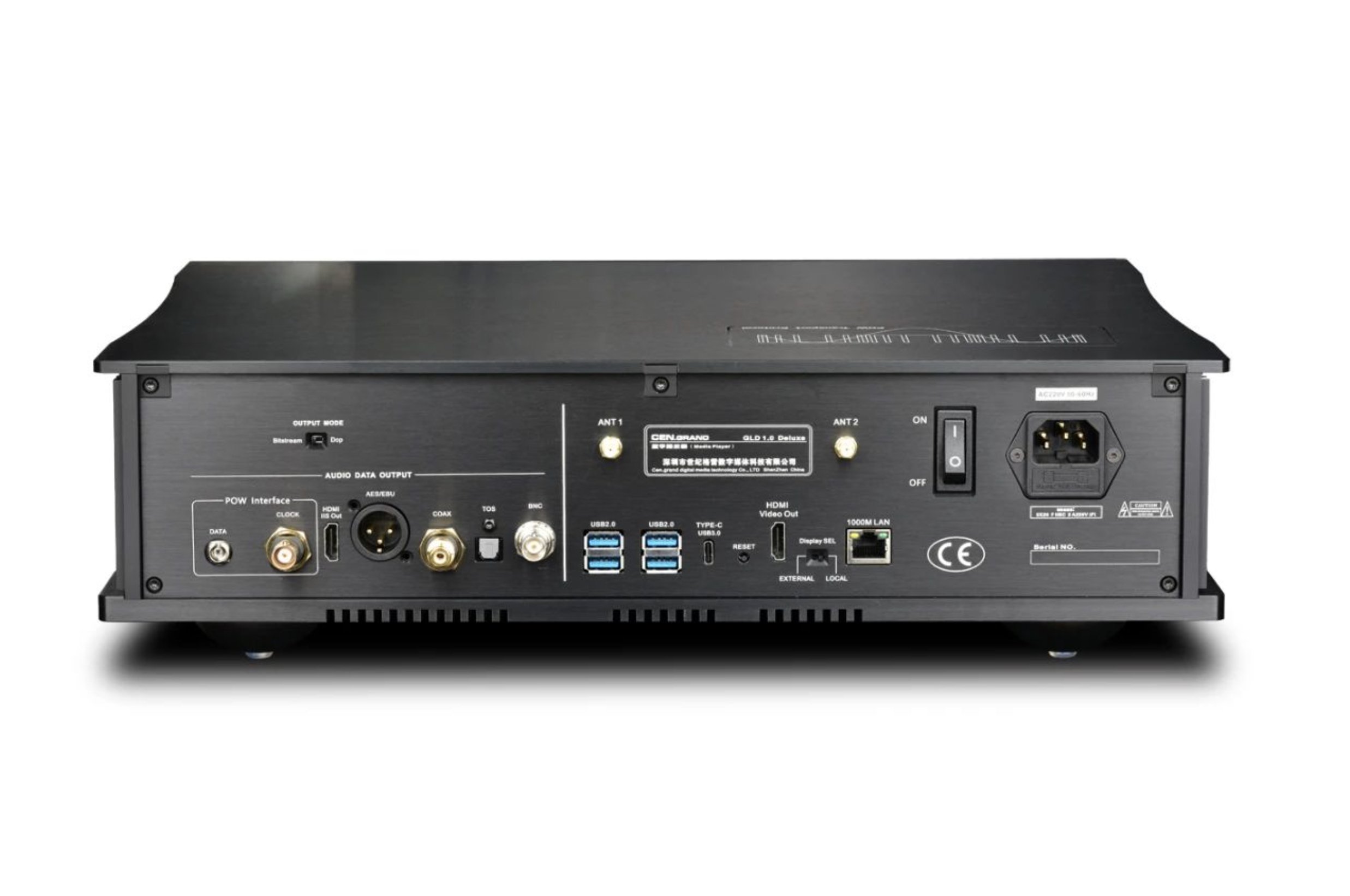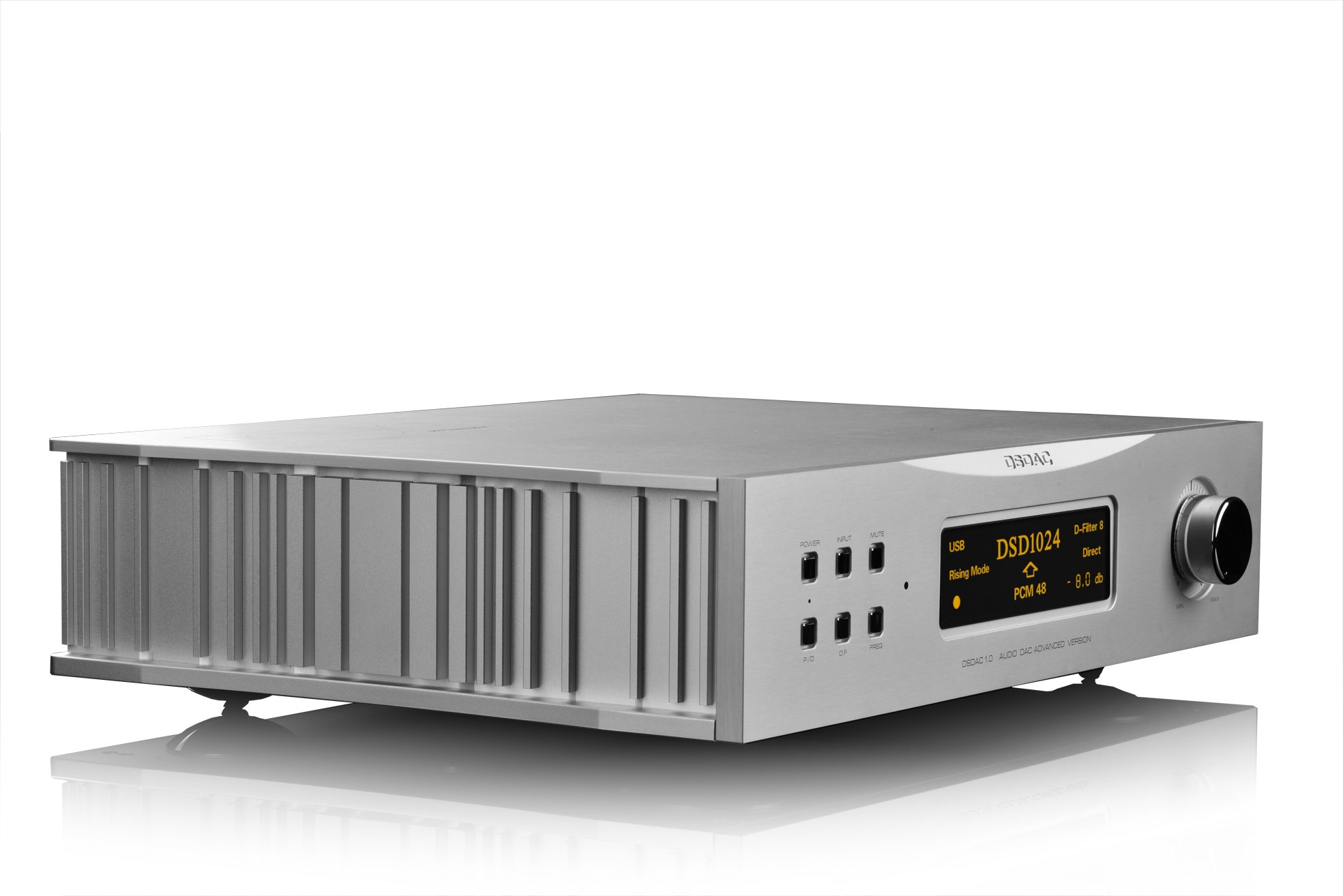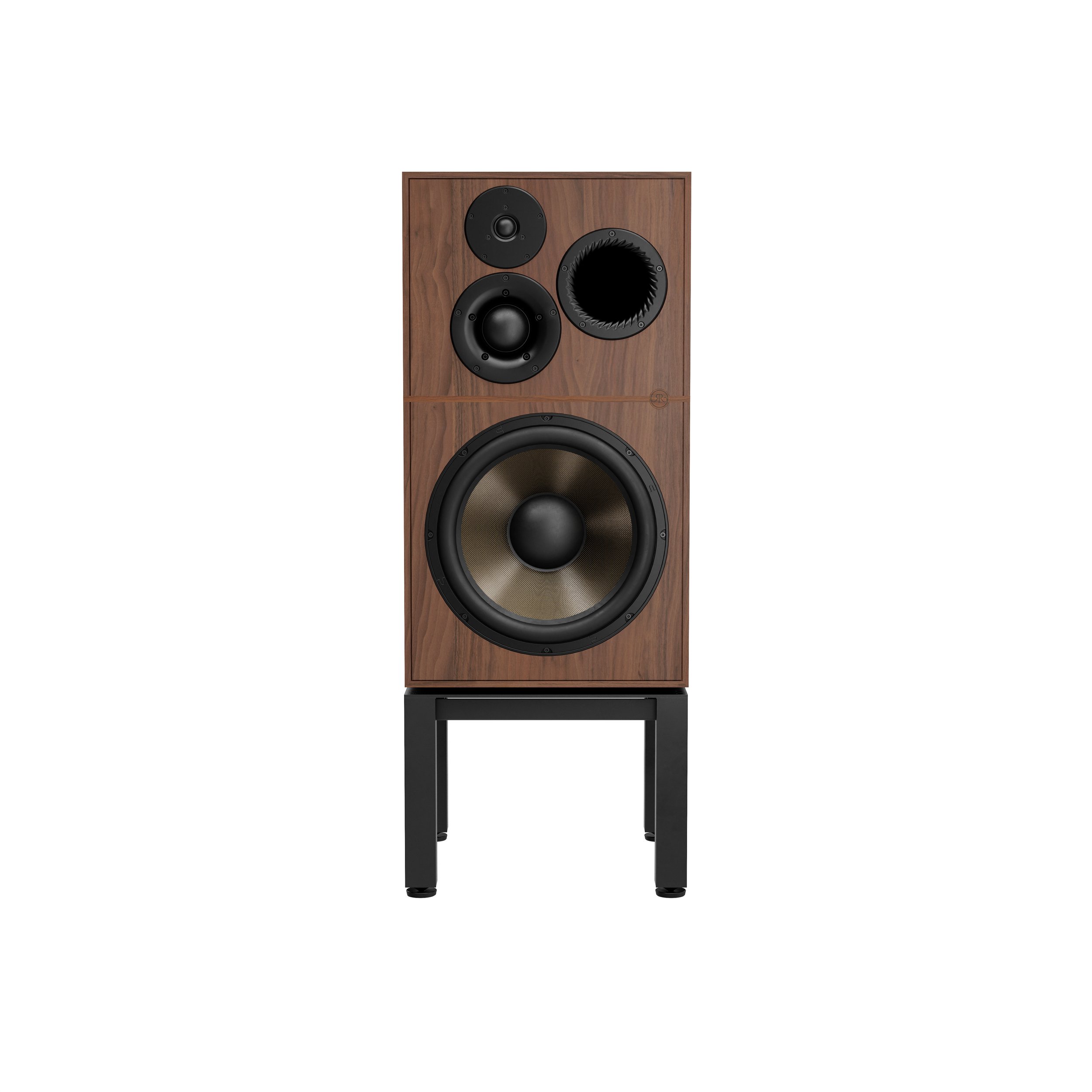Download the GLD1.0 User Guide
The GLD1.0 Deluxe Model is a cutting-edge Digital Audio Player - often described as a digital turntable - built on the Intel x64 architecture and running on the Windows platform. It leverages high-speed interfaces for seamless audio data transmission, integrating state-of-the-art digital processing and communication technologies. By guaranteeing 100% data integrity in audio output, the GLD1.0 delivers unparalleled sound quality, positioning itself as a top-tier, “ceiling-level” player. With these advanced capabilities, the GLD1.0 is poised to lead a new era in digital audio playback technology.
The key advantage of GLD1.0 is 100% output data integrity: At the core of the GLD1.0’s design is its ability to output audio data without any loss, preserving the full integrity of the original signal throughout the entire transmission process.
Why Intel’s x64 Architecture?
The GLD1.0 leverages Intel’s x64 architecture for several critical reasons:
High Computational Power: The x64 platform excels at floating-point operations, enabling seamless processing of high-bitrate audio with precision.
Robust Software Ecosystem: Offering extensive compatibility and a broad software environment, x64 ensures seamless integration unmatched by other architectures.
Enhanced User Control: It provides users with greater autonomy, supporting advanced customization and flexible usage configurations.
Design Philosophy: Moving Beyond USB Audio
The GLD1.0 breaks away from the commonly used USB audio protocol, which is common in many digital players and Hi-Fi devices but inherently allows data errors to maintain continuous playback. Instead, it employs the high-speed PCIe (Peripheral Component Interconnect Express) transmission protocol, featuring robust error-checking mechanisms that guarantee error-free audio data transmission. This ensures pristine sound quality by preventing data loss or modification.
USB audio protocol often causes subtle data loss during transmission, degrading sound quality and preventing truly perfect playback. In contrast, PCIe enforces zero data errors, preserving the original audio fidelity.
Data Integrity and Transmission Explained
File System Reliability: Modern operating systems (Windows, Linux, Android) and storage devices (hard drives, SSDs) utilize mature error-checking systems (ECC, CRC, hash checks like MD5/SHA-256) to ensure near-perfect file data integrity during reading and storage.
Error Rates in Storage Devices:
Consumer-grade hard drives: ~1 error per 12.5TB
Enterprise-grade drives: ~1 error per 125TB
Modern SSDs: ~1 error per 1.25PB
Why Perfect Data Isn’t Enough: Despite near-perfect file reading, many players using USB audio lose data during internal transmission, impacting sound quality. Improving hardware like power circuits or clocks during file reading doesn’t affect this issue. The core problem is the transmission protocol itself.
Why PCIe (Peripheral Component Interconnect Express)?
Because USB audio allows errors, it cannot guarantee data integrity during transmission. The GLD1.0 solves this by replacing USB audio with PCIe — a protocol that disallows transmission errors, operating in synchronous mode. This requires a complex clock and data management system, including a proprietary POW transmission protocol (covered below). This innovation has earned a national invention patent in China.
(GLD1.0 Deluxe Model Block Diagram)
Hardware and Software Overview
Main Control System:
Processor: Intel NUC BKCM11EBI716W module featuring an 11th-gen Intel Core i7-1165G7 CPU (4 cores, 8 threads, 2.8–4.7 GHz)
Memory: 16GB LPDDR4x-4266 dual-channel memory
Storage: 500GB SSD storage
Intel Wi-Fi 6 AX201 wireless module with Bluetooth 5.1
Interfaces: 4 USB ports, 1 Type-C port, 1 Gigabit Ethernet port, 1 HDMI output (switchable between internal and external display by a toggle)
(GLD1.0 Output/Input Interface of Main Control System)
Digital Processing System:
Connected to the main board via PCIe, it includes seven subsystems: receiver, isolator, data processor, clock module, POW transmission module, SPDIF module, and power supply. Firmware enables synchronous PCIe operation for flawless data and clock transmission.
POW Transmission Module: A Proprietary Innovation
POW (Parting of the Ways) is a unique transmission protocol that separates clock and data signals:
Data is transmitted over optical fiber cables.
Clock is transmitted separately via coaxial BNC (Bayonet Neill–Concelman) cables.
At the DAC end, POW recombines clock and data into an I²S (Inter-IC Sound) signal for precise digital-to-analog conversion.
The POW transmission protocol is a pioneering innovation in the Hi-Fi audio field, enabling high-quality, simultaneous transmission of both audio data and clock signals. By employing telecom-grade optical transmitters and receivers that utilize invisible light, it achieves Giga-level bandwidth and supports transmission distances of several kilometers. This makes it exceptionally effective for short-range transmission of Mega-level audio data with high reliability and precision. The POW architecture in the GLD1.0 supports the transmission of 8-channel high-bitrate audio and offers future potential for deployment in multi-channel DSD playback systems.
(GLD1.0 Digital Audio Output Interfaces, including the POW interface and the SPDIF interface)
HDMI-I2S Interface
Though HDMI is not a traditional audio interface, many devices use it for I²S (Inter-IC Sound) data transmission. The GLD1.0 includes an HDMI-I²S port with pin assignments compatible with major European and U.S. audio products to meet market needs.
HDMI-I2S Interface
Operating System and Playback Software
Operating System: Windows 10 IoT Enterprise LTSC, chosen for its stability, reliability, and powerful network features, providing a familiar PC-like user experience. The OS is factory-activated.
Playback Software: JRiver, a highly regarded player offering comprehensive music management and mobile remote control apps (JRemote for iOS and Android). JRiver is pre-activated on the GLD1.0; Foobar is not supported.
Network and Playback Features
The GLD1.0 supports multiple network music platforms and local network playback via NAS (Network Attached Storage). Roon is recommended for network streaming. Novice users are advised not to modify system settings to maintain stability.
Advanced Technologies Delivering Exceptional Audio Performance
The GLD1.0 is a high-performance digital audio player powered by a suite of innovative technologies, including a proprietary digital clock architecture that has been awarded a national invention patent.
PCIe Synchronous Transmission Technology
At the core of the GLD1.0 is its ground-breaking PCIe synchronous transmission system. This technology employs a precisely engineered interrupt mechanism in coordination with the host system to enable real-time, error-free data transfer. Unlike conventional USB audio protocols, which are prone to packet loss and latency, PCIe ensures complete and unaltered audio data delivery from the main control system to the digital processing unit - setting a new benchmark for digital transmission fidelity.
Clock Distribution System
Another pillar of the GLD1.0’s performance is its sophisticated clock management system. Utilizing high-quality femtosecond oscillators, the system achieves synchronized operation between the PCIe host and the data receiver. These precision clocks also drive the POW and SPDIF output modules, ensuring ultra-stable timing throughout the digital signal chain.
POW Transmission and Reception Technology
A defining innovation of the GLD1.0, the POW (Parting of the Ways) transmission technology stands out for its advanced approach to digital audio signal integrity. By separating the transmission of audio data and clock signals, it eliminates the degradation commonly introduced by SPDIF encoding mechanisms, which often compromise clock quality. This separation enables the DAC to receive high-precision clock signals directly from the digital player, effectively emulating the performance of systems that use an external master clock.
Audio data is transmitted via telecom-grade optical fibers with Gigabit-level bandwidth, capable of reaching distances of several kilometres without signal degradation. Meanwhile, the clock signal is sent independently through a coaxial BNC connection. Once received by the POW module, the audio data and clock are recombined into an I²S signal, which is then passed to the DAC for conversion.
This architecture ensures exceptional signal purity and timing accuracy. As of now, it represents the cutting edge of digital audio transmission technology in the high-fidelity audio industry.
Electromagnetic Isolation Technology
To preserve clock purity and prevent interference from the main control system’s electromagnetic environment, the GLD1.0 implements a dedicated isolation layer between the control and processing modules. This physical and electrical separation safeguards the digital subsystem, ensuring consistent high-quality performance.
The sonic benefits delivered by 100% data integrity are profound and unmatched. USB audio protocols inherently introduce errors and data loss, which significantly degrade audio detail and resolution. This has long fuelled scepticism in the Hi-Fi community about whether digital playback can rival CD-quality sound. The GLD1.0 challenges that notion decisively. With complete, unaltered data transmission, it brings remarkable improvements in clarity, harmonic richness, and spatial realism - traits that define true high-end audio. Simply put, the GLD1.0 is designed to exceed expectations and redefine what digital playback can achieve.
How to Use GLD1.0
GLD1.0 operates on the Windows operating system, so using it is similar to using a standard PC-based Hi-Fi system (PCHFI). Below is a brief usage guide. For detailed instructions, please Download the User Guide.
Startup and Management Software
Upon powering on, the admin DSDAC management software will launch automatically. This software allows you to connect GLD1.0 to the network even without a mouse or keyboard and lets you set the default media player to run at startup.Remote Control via AnyDesk
GLD1.0 comes with AnyDesk remote control software pre-installed. You can manage and control GLD1.0 remotely using another computer with AnyDesk installed such as a laptop or even a mobile device running a compatible remote control app.External Display Support
GLD1.0 includes an external display interface that supports connection to large screens, providing an intuitive and user-friendly interface.Optimized Performance with POW DAC
For best audio performance, use GLD1.0 with a DAC that supports POW input, such as the DSDAC1.0 Deluxe Model-P. This configuration ensures high-fidelity data transmission and optimal playback quality.
GLD1.0 supports Windows applications and can run any music software that supports ASIO drivers. Compatible platforms include Roon, Qobuz, and others.
POW Connection Overview
The image below shows the POW receiver module installed inside the DSDAC1.0-P DAC, along with the POW interface panel located on its rear. In addition to the POW port, the DSDAC1.0-P also features an HDMI-I²S input, allowing connection to front-end digital sources with HDMI-I²S output. For ease of setup, pin definitions are clearly printed on the rear panel.
The POW interface enables the transmission of high-quality clock signals and high bit rate audio data with zero loss, making it the most advanced and reliable digital transmission method available today. When using DACs from other brands, traditional SPDIF interfaces—such as coaxial or AES—must be used instead. While SPDIF can still deliver excellent sound quality and maintain full data integrity, it is limited in bandwidth and cannot support audio formats beyond PCM 192kHz or DSD64.
Visit the Cen.Grand website for more product information: https://en.cen-grand.com




























